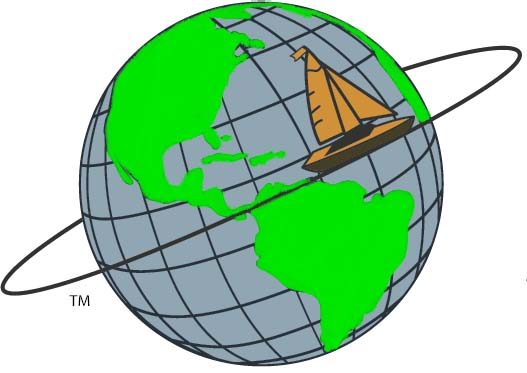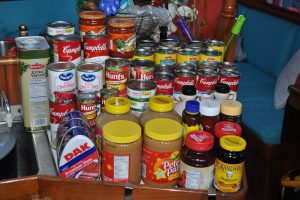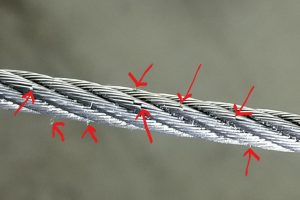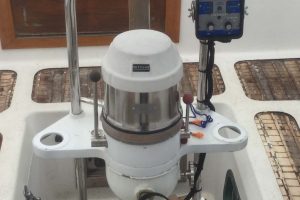Answer #3
Using an old navigational trick, you will aim for a landfall in a known direction to one side of your intended destination. Knowing currents are going to push you Easterly in the Gulf Stream and possibly Westerly on either side of the Stream as well as affect your speed, again possibly slow you down or speed you up over the bottom and given the distance involved (over 300nm) I would select;
New York City
I would select NYC even though it is about 100 miles West of Newport for several reasons.
- All I have to navigate with is DR and I can’t tell, any better than Blackbeard could, what the currents I am going to negotiate in the next 12-24 hours or so are actually going to do to me. (I may have a better idea than Blackbeard did, but the reality is I don’t know.)
- I don’t have to actually hit NYC dead on to know it is there. NYC is big, at night it is bright and day or night I can see it a long way out to sea, most likely before I even see low lying Long Island itself
- Even if I miss NYC itself when I make landfall I will have a pretty good idea that the land in front of me is Long Island or even possibly, New Jersey.
- Once I make landfall I know I have to turn East (Right) to find Montauk Point on the Eastern end of Long Island. Once there I will again know my exact position and can plot my course direct to Newport.
To have an idea of your position as you travel towards NYC you will maintain a DR (dead reckoning) navigational plot that you will start from your last written GPS position in the log. A DR plot takes into account only-Direction Traveled as measured by ships compass and Speed thru the water or along with Time distance traveled.
If your electric speed/log is still functioning you can tell how fast and how far you have traveled in any given period of time to maintain your DR plot. If, it is not functioning because you have lost all DC power or the lighting strike destroyed the instrument, than you will have to figure distance the old fashion way and surprisingly, though a bit more work, the old fashion way is pretty accurate.
I once lost all DC power with student navigators on board (it was not intentional) and we used the following process to maintain a pretty accurate DR Position.
- Drop a floating object in at very pointy end of the boat (the Stem Head) and time its passage to the transom (the square end of the boat). Your distance for figuring speed will be the length of the boat in feet. The time you measure will be in seconds.
- Because we are using feet and seconds instead of the traditional “miles traveled measured in hours or minutes” to figure boat speed in knots we will need to make an additional calculation to convert our answer from Distance in feet and Time in seconds to Knots of Boat Speed.
- The conversion factor we use of 1.7 is derived by dividing the number of feet in a nautical mile-6076- by the number of seconds in an hour-3600- and rounding off to the nearest tenth).
- Thus, the formula we will use will look like this – Distance (D)÷Time(T)÷1.7=Knots
Let’s say we are on a 40’ boat and we drop a glass bottle (eventually it will sink and is bio-degradable), or a piece of wood, or a wad of damp paper towel in at the stem and time its passage to the transom and it takes 5 seconds, our Time-Speed-Distance problem will look like this;
40’÷5÷1.7=Boat Speed of 4.7 knots
Repeat the process several times each hour and get an average speed which you can use to figure how far you have traveled in that hour to maintain your DR Plot. If conditions remain constant, likely your average 1 hour speed will also allowing you to spend less time drinking the beer to get empty bottles or ripping apart interior woodwork or resorting to toilet paper for objects to measure speed with.
There is also the traditional Chip Log to measure speed with, but unless you made one up and practiced with it before you left on your cruise you likely don’t have the materials on board to make one up in a hurry. If you are interested in making an old Chip Log you can find the directions online.
The real lesson here is whether from a lightning strike, electrical system failure, unit malfunction or as we are starting to see possible, a hacker, GPS is not as infallible as once thought. Always keep an up to date GPS position in the ships log log so you have a starting point to begin Dead Reckoning from. While DR only relies on boat speed and compass course through the water padding your landfall to one side of your destination or the other will get you there. It worked for 100’s of years before electronics. Next time you are out sailing turn off your electronic navigation systems, measure your boat speed by the process above, maintain a DR plot on a Paper Navigational Chart and increase your navigational confidence!






Leave a Reply
Your email is safe with us.